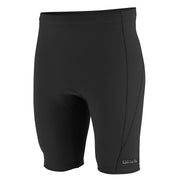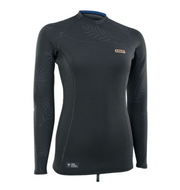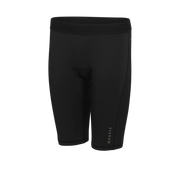Cold water sessions are just better! (Guide to buying your next wetsuit)
Every winter, many of us count the days until the “warm” season returns.
Some will return to the water in March, others only in June. Some diehards will never really stop going out, even in winter!
That being said, (and it's no secret) if you want to take advantage of the best wind conditions in Quebec, you'll find them in cold water.
First, here are some reasons why a cold water session is better:
- No summer crowds.
We don't have to worry about restrictive swimming areas, higher boat traffic, crowds on the shores/beaches and the multitude of other riders who only come out in the summer. The parking lots are less busy and some of them are free out of season. Not bad !
- The wind !
Usually, the strongest winds occur during the transitional seasons, spring and fall. In addition, the cold wind is denser, therefore stronger (Hello Big Air!).
- No algae.
Foil lovers don't have to worry about the grass banks that cover the spots during the summer.
- The post-session hot shower is much better in November than in July.
All this to say that the start and end date of a season varies from one person to the next. For those who would like to lengthen their 2024 season, here is some practical information for when you chose your next wetsuit.
What thickness should you look for?
Think about the spots you frequent and determine the month you would prefer to start your season. A good practice is to consult the water temperature charts in your region (available online) to find the minimum temperature for the desired month.
As a guide, here is a chart of thicknesses in millimetres depending on the water temperature.*
| 20 degrees Celsius / 68 degrees Fahrenheit and above | 2mm and less |
| 13 to 19 degrees Celsius / 55 to 66 degrees Fahrenheit | 3/2mm |
| 11 to 15 degrees Celsius / 52 to 59 degrees Fahrenheit | 4/3mm |
| 8 to 12 degrees Celsius / 46 to 54 degrees Fahrenheit | 5/3mm |
| Less than 8 degrees Celsius / Less than 46 degrees Fahrenheit | 5/4mm up to drysuit |
*Please note that this chart is approximate and that factors such as your physical condition, the activity performed, the quality of your suit and the air temperature may influence the results.
Have you decided that a 5/4mm+ wetsuit with integrated hood would be the ideal option for you? Don't miss out on our wetsuits at 30% off!
What features should you look for in a wetsuit?
Here are the most important aspects to consider when choosing a wetsuit.
- Type of neoprene used: The type and grade of neoprene used in a wetsuit will greatly influence its thermal insulation as well as its flexibility. The difference between basic neoprenes (Ex: Mystic Star 5/3mm ) and high-end neoprenes (Ex: Ion Seek Amp 5/4mm ) is significant. In the end, you get what you pay for!
- Types of seams used between panels: Suits are made up of multiple panels and these are usually sewn together. As you can imagine, each needle hole is a potential water entry. To maximize the "waterproofness" of the suit, high-end models will usually have glued and/or fused panels which will then be sewn on the outside only (without completely piercing the material) and everything will be reinforced with a sealing tape on the inside along the joints. Some basic suits will have no sealing tape, some will only have it in critical areas, and the better suits will have it everywhere. High-end wetsuits will sometimes also have a silicone-based sealant applied to the outer seam (Ex: O'neill Psycho One 4/3mm ). Generally; the more you pay, the less water infiltrates
- Lining used inside the suit : The lining used to cover the inside of the panels will vary a lot between basic and premium suits. Some suits will not have one at all (not recommended for cold weather) and better quality ones will have a "quickdry" type lining which traps air molecules to add a super effective layer of insulation.
- Other features : The double collar through which we insert our head before zipping the suit, protective panels inserted under the neoprene, sealing strips inside the opening of the arms and legs, a waterflush system, a wetsuit with front opening.
All these details can influence your selection, but they should not surpass in importance the first three points mentioned above. 
The drysuit: The ultimate weapon for a 12-month season
For the more courageous, the drysuit allows you to complete sessions throughout the year, while remaining dry. This suit is not as close-fitting as a traditional wetsuit. It therefore allows the rider to wear underlayers that keep warm and stay dry. Many of our customers wear the same types of clothing under their drysuit as they do under their ski suit.
Note that the seals at the opening of the arms and legs must be replaced every 4-5 years to ensure the watertightness of the suit.

The multi-layered approach: Stretch your season...and your budget!
Adopted in the world of winter sports for many years now, this approach could indeed be the solution to maximize your outings on the water without emptying your bank account.
Here are items that can be worn under a 4/3mm wetsuit to extend the season:
O'neill Men's Thermo-X Vest w/ Neo Hood
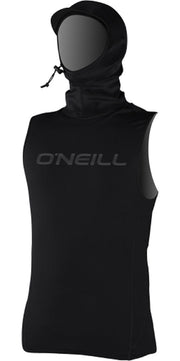
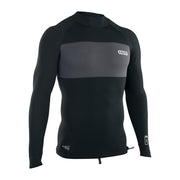
O'neill Reactor-2 1.5mm Shorts
